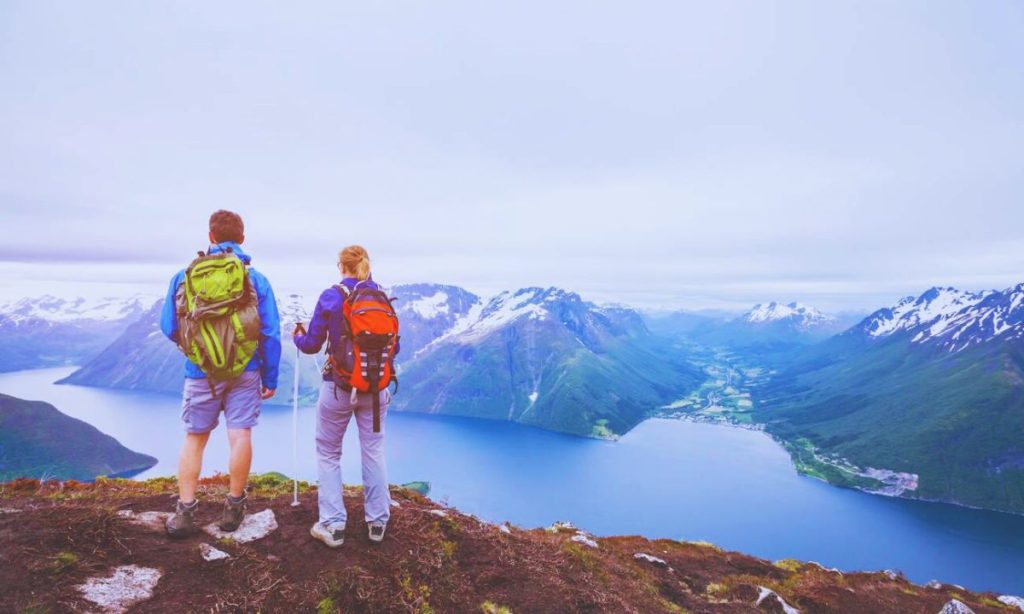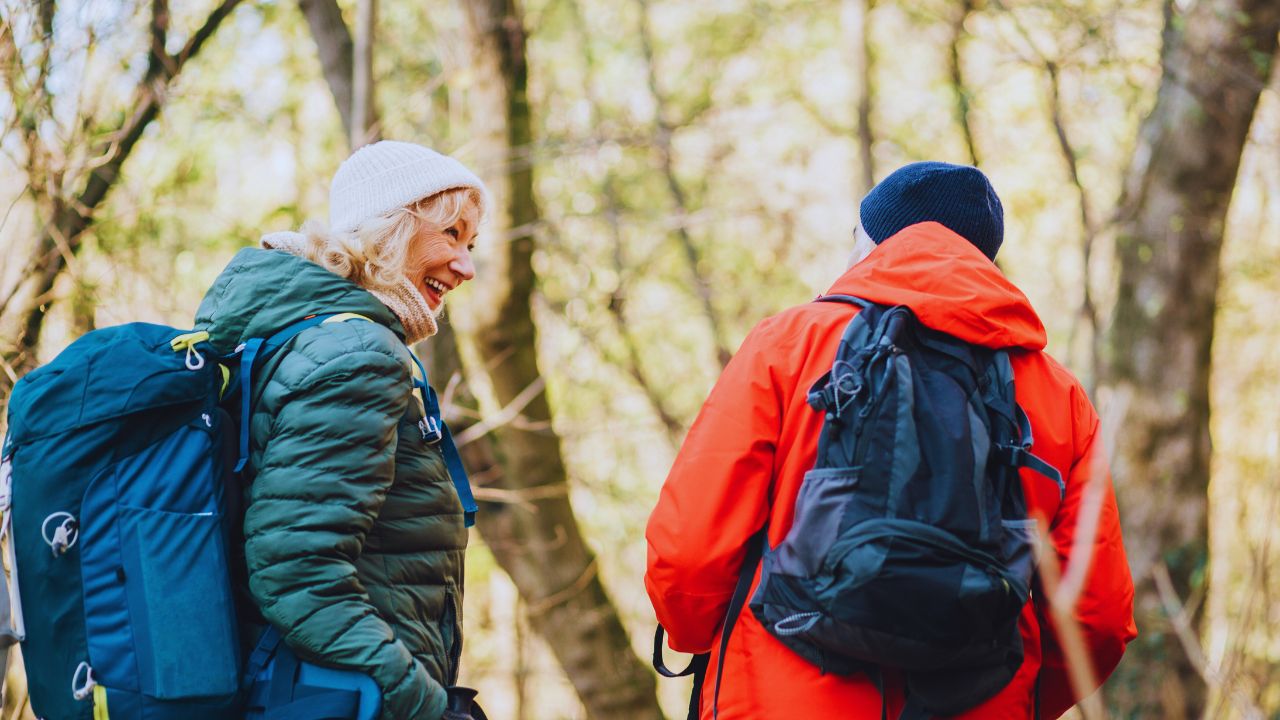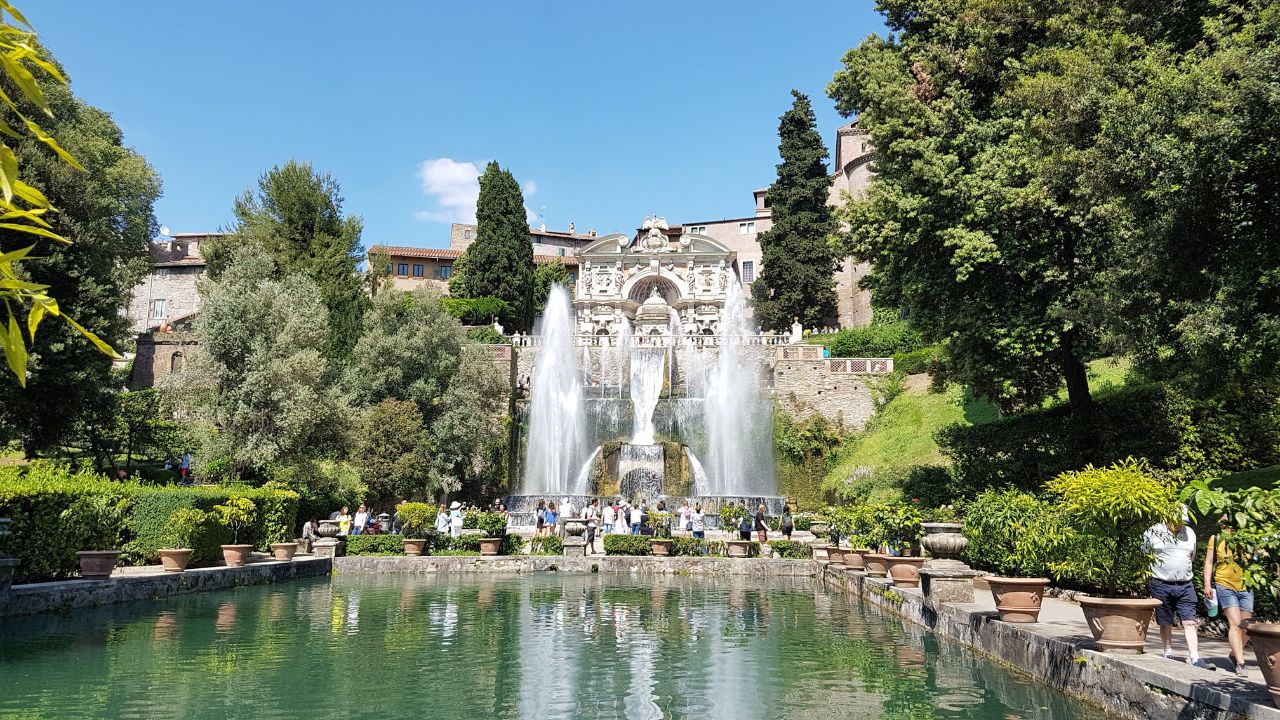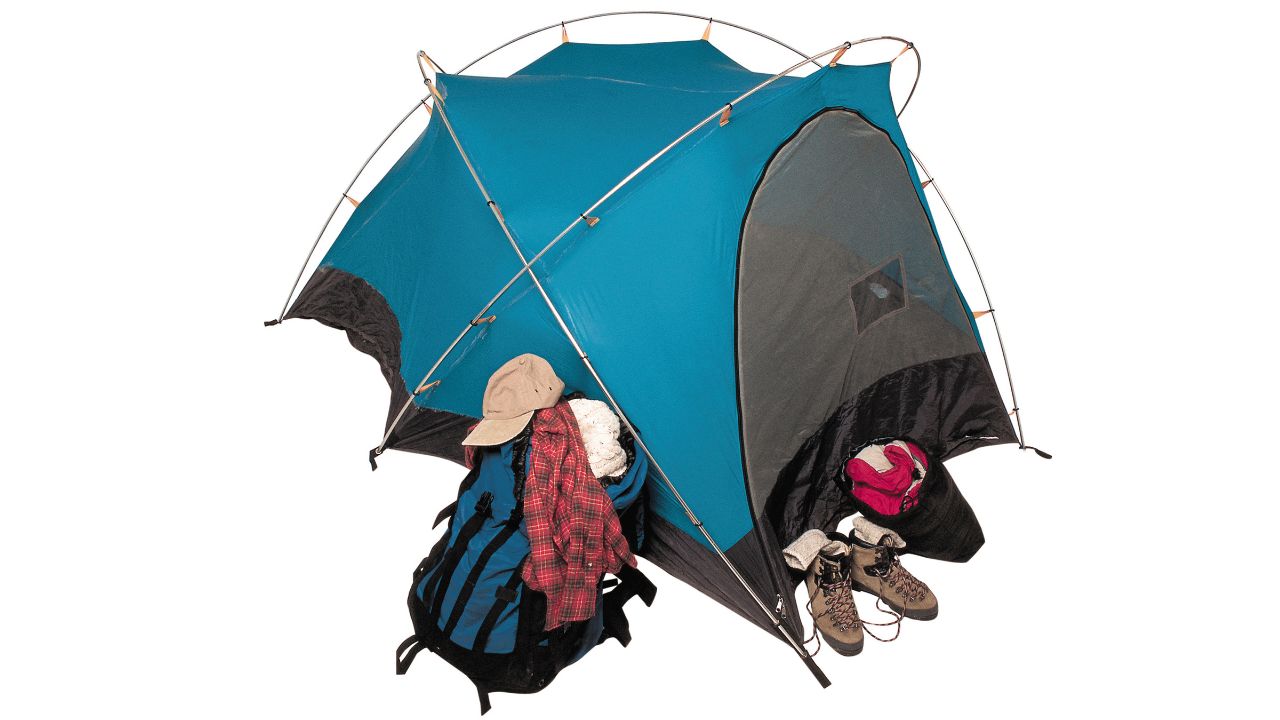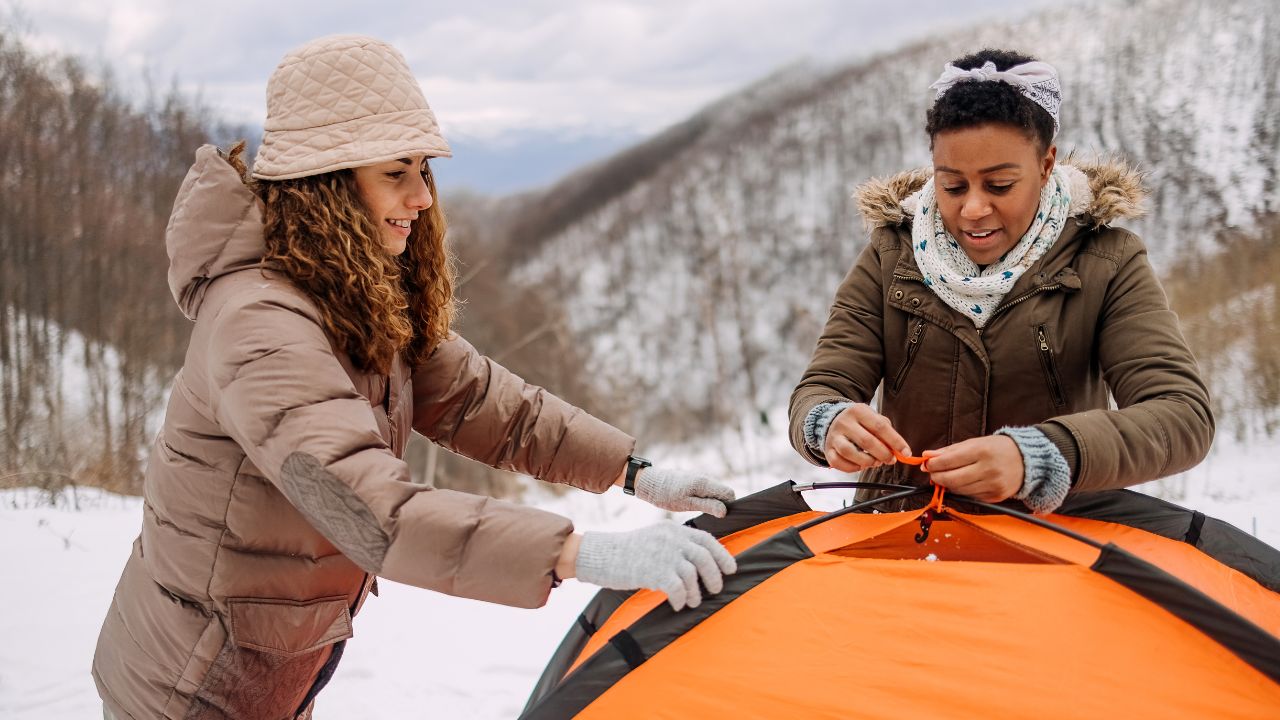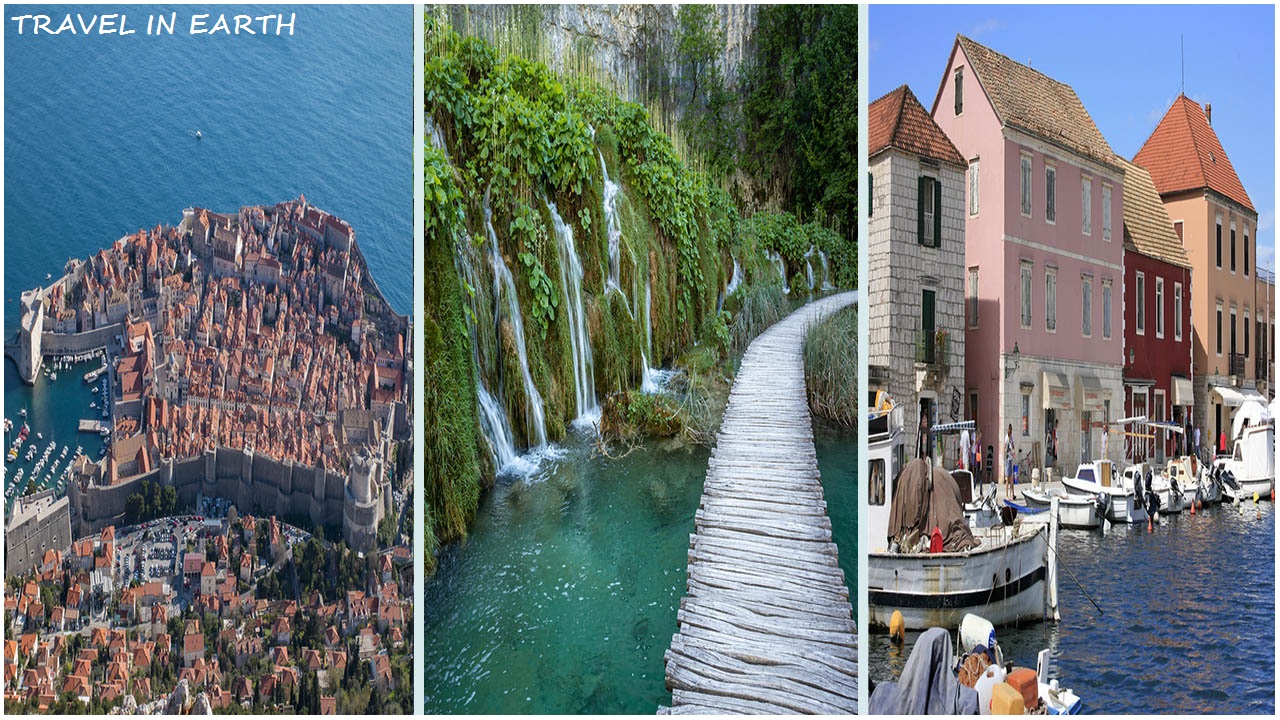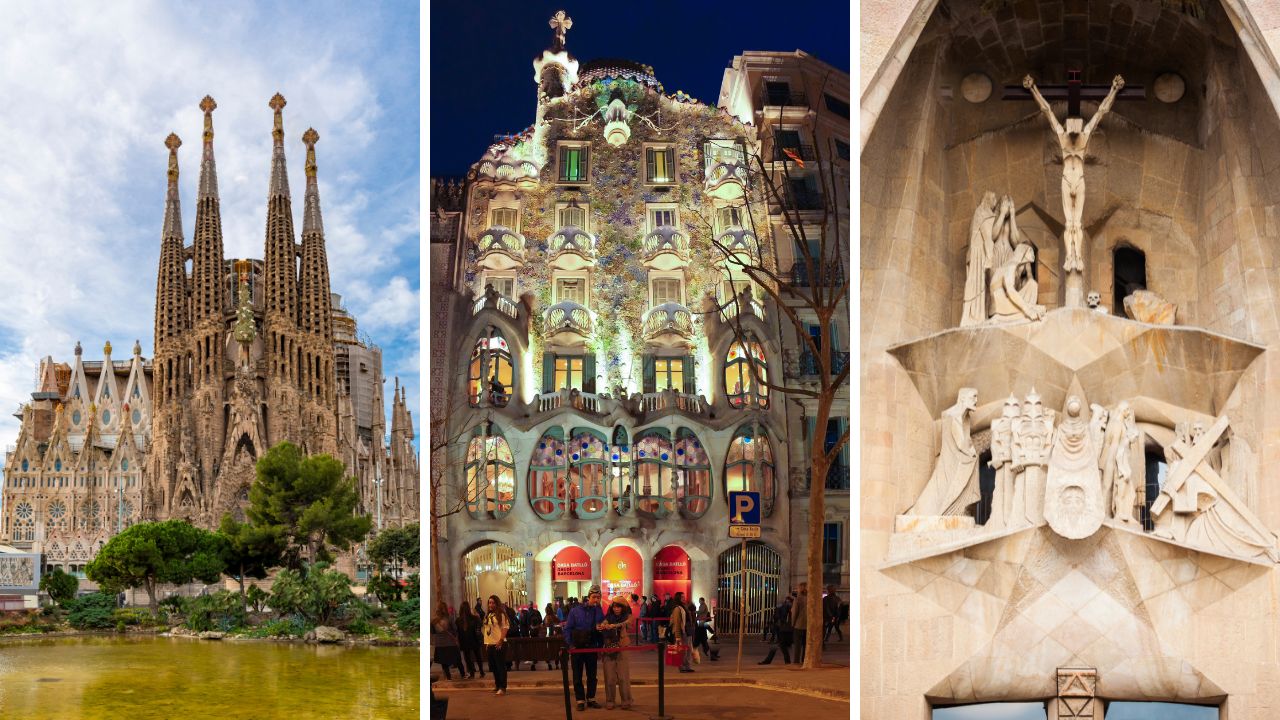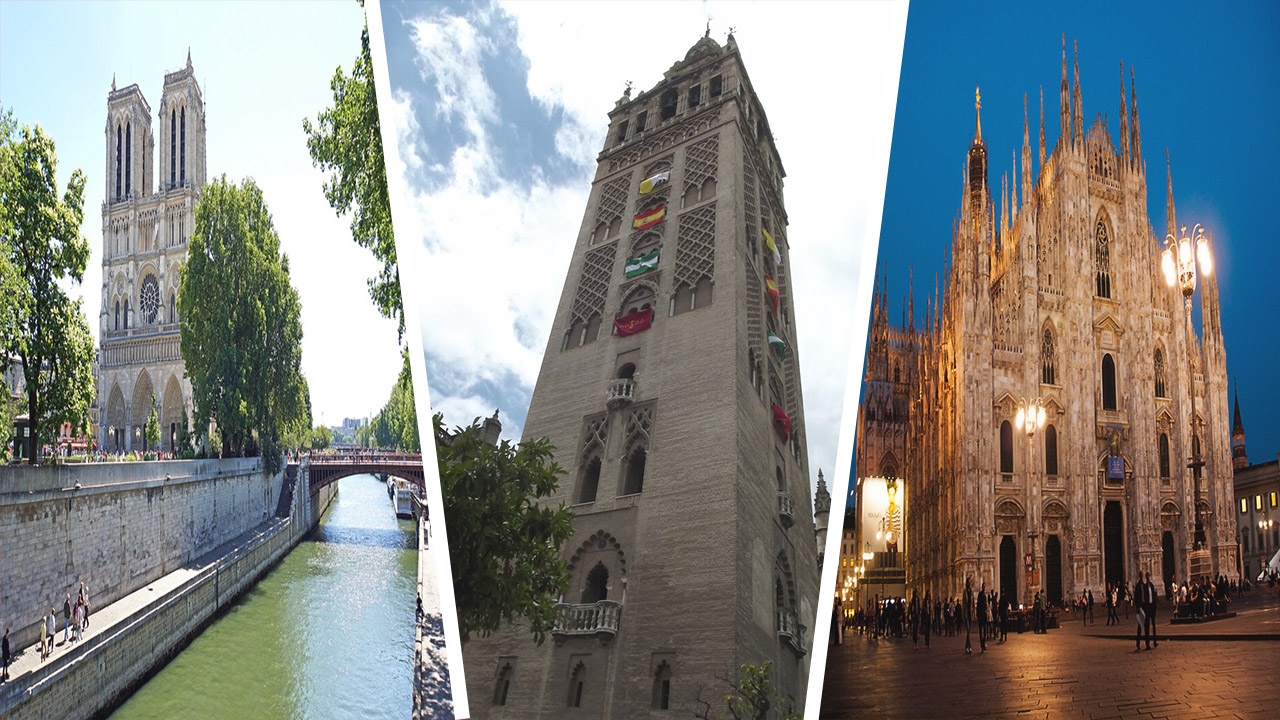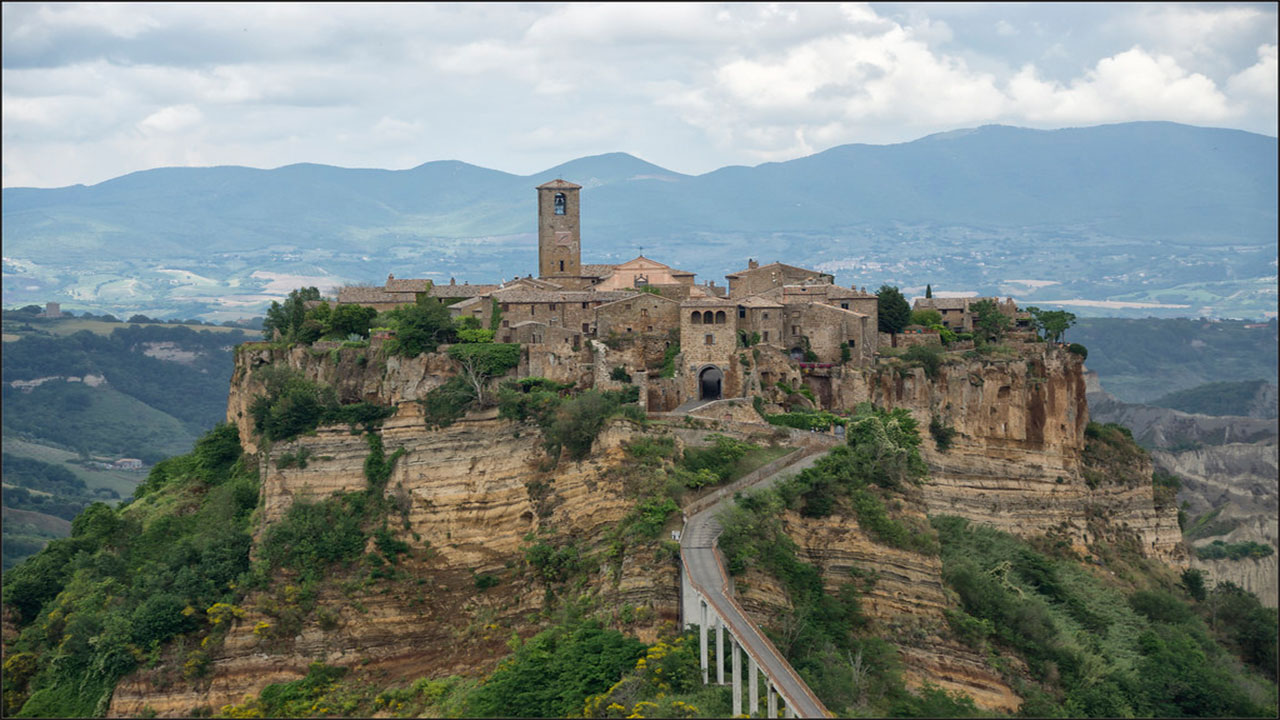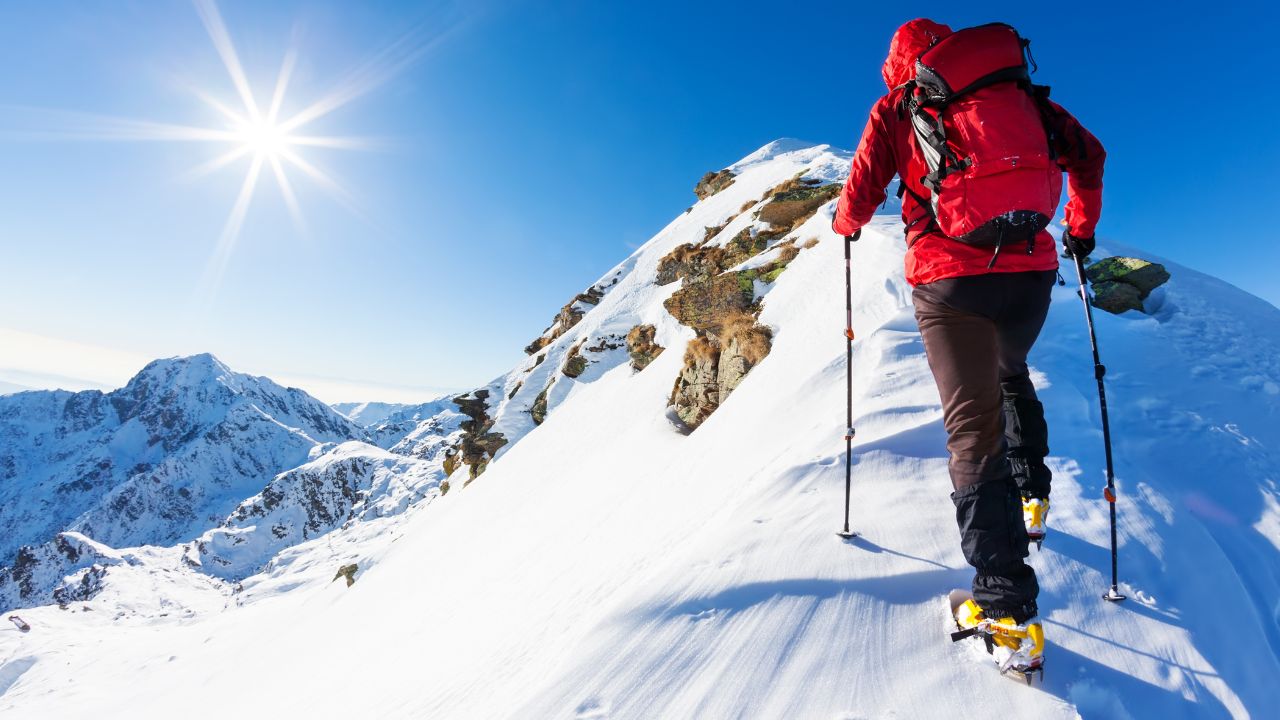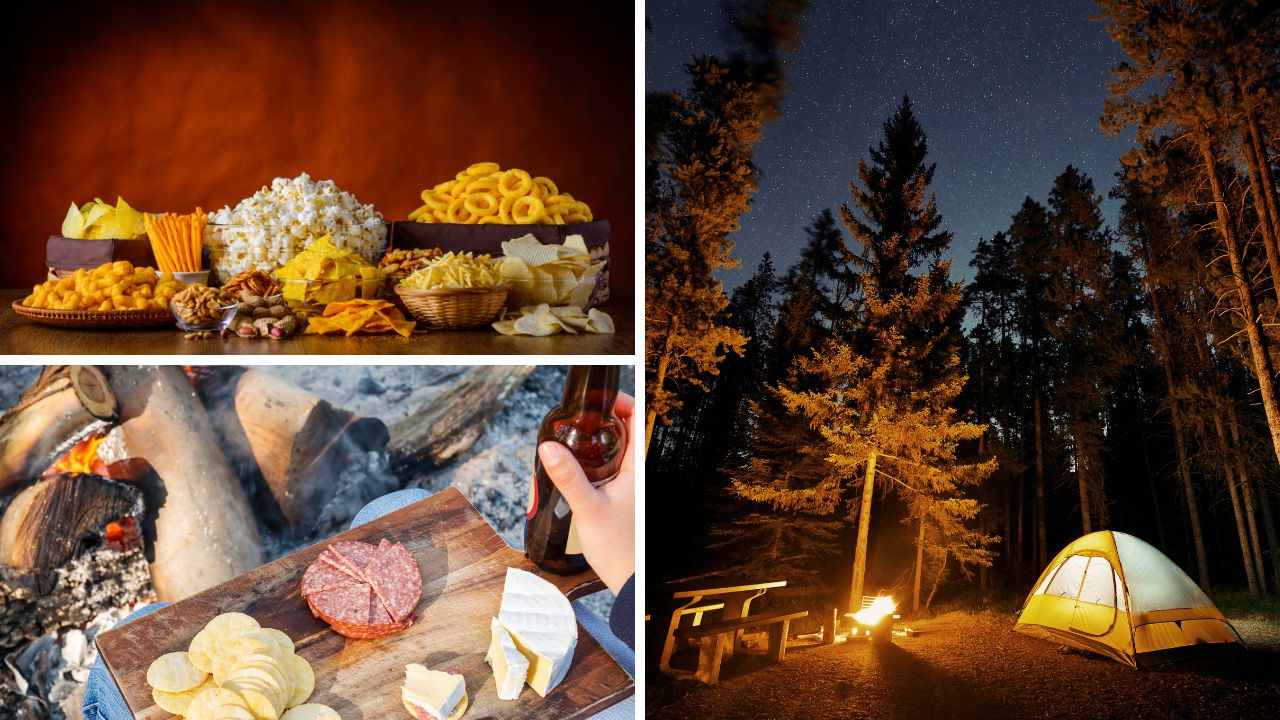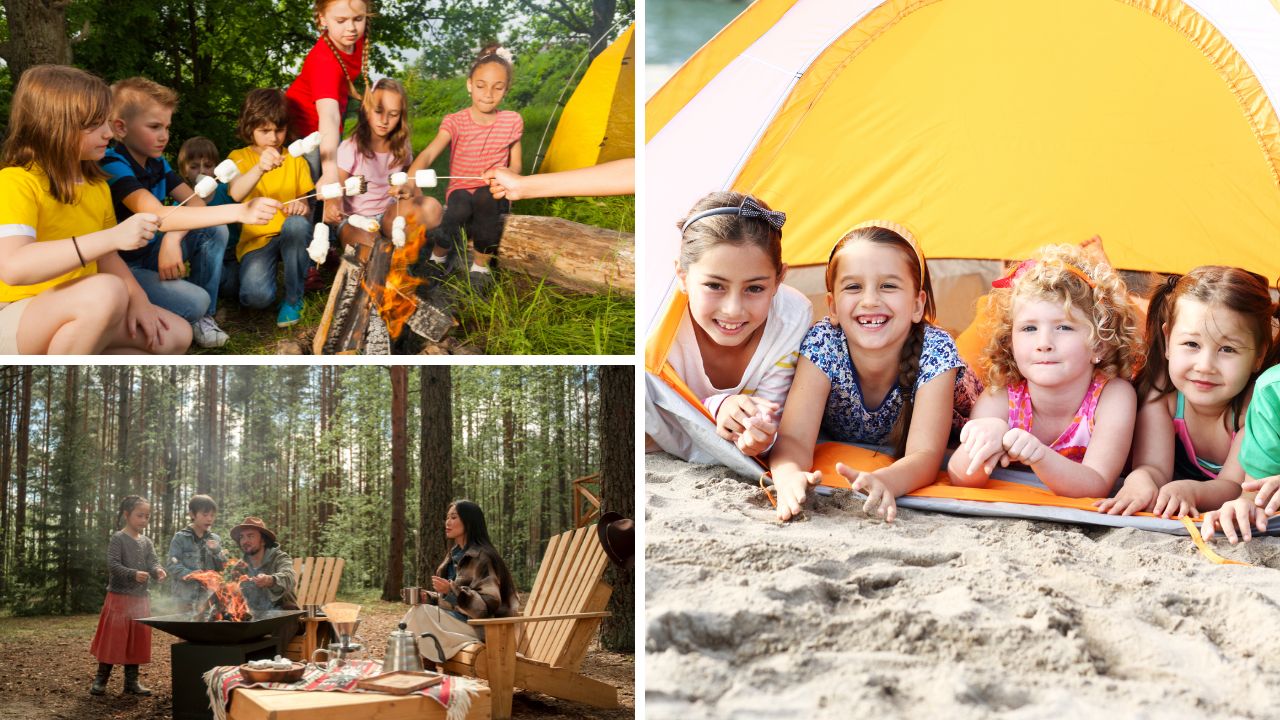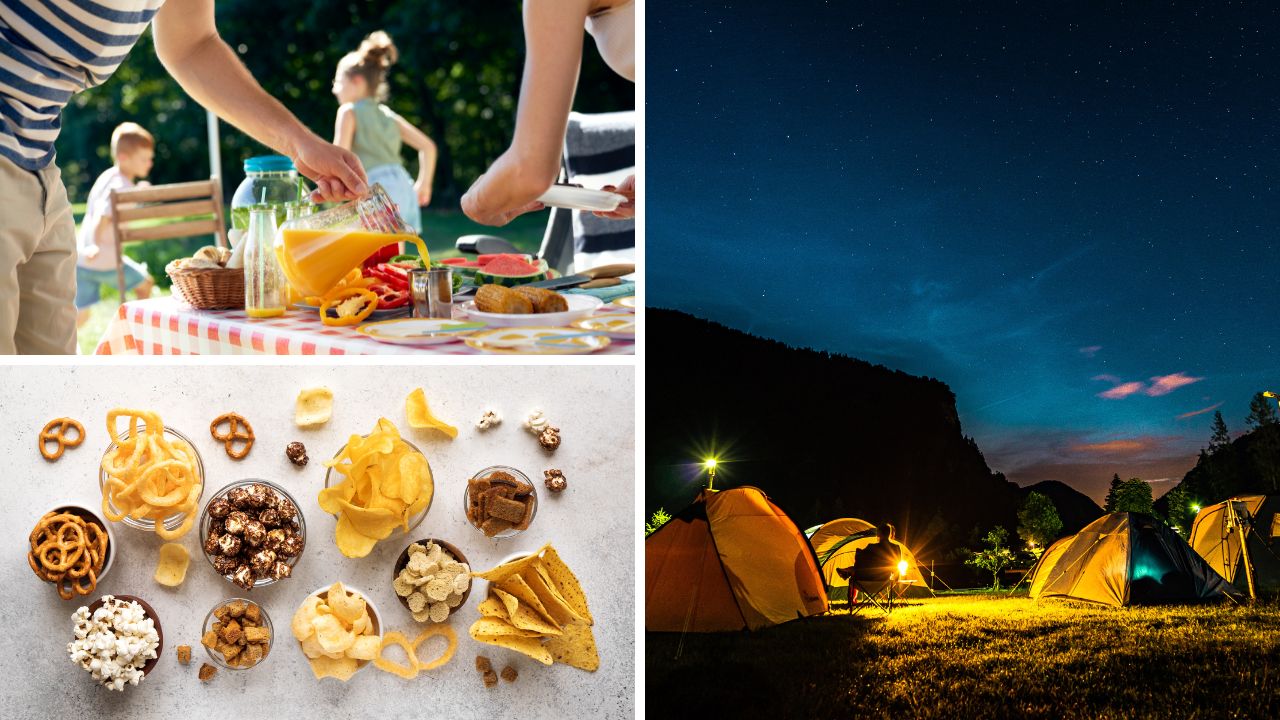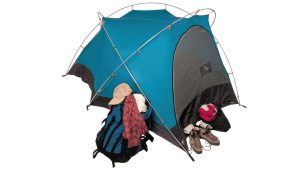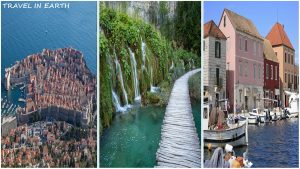Norway, a land of breathtaking fjords, towering mountains, and pristine wilderness, is a hiker’s paradise. With its diverse landscapes and well-maintained trail systems, Norway offers outdoor enthusiasts an unparalleled opportunity to explore some of Europe’s most stunning natural beauty. From the iconic Preikestolen (Pulpit Rock) overlooking the Lysefjord to the rugged peaks of Jotunheimen National Park, Norway’s hiking trails cater to all levels of experience and adventure.
We’ll explore the 10 best places to go hiking in Norway, providing you with all the information you need to plan your next Norwegian hiking adventure. We’ll cover the unique features of each location, difficulty levels, best times to visit, and practical tips to ensure a safe and memorable experience. Whether you’re a seasoned trekker or a casual day-hiker, Norway’s trails offer something for everyone. Join us as we explore the natural wonders in this Scandinavian hiking haven, lace up your boots, and pack your backpack.
1. Preikestolen (Pulpit Rock)
Preikestolen, also known as Pulpit Rock, is one of Norway’s most famous and photographed natural landmarks. This flat-topped cliff rises 604 meters (1982 feet) above the stunning Lysefjord, offering hikers an unforgettable view of the surrounding fjord landscape.
The Hike:
- Difficulty: Moderate
- Distance: 8 km (5 miles) round trip
- Duration: 4-5 hours
- Elevation Gain: 350 meters (1150 feet)
The trail to Preikestolen is well-maintained and marked, making it accessible to hikers of various fitness levels. The hike begins at the Preikestolen Mountain Lodge and winds through diverse terrain, including forests, marshlands, and rocky outcrops. Along the way, you’ll encounter several viewpoints that provide glimpses of the breathtaking scenery to come.
Best Time to Visit:
The hiking season typically runs from May to October. July and August are the busiest months, with warmer temperatures and longer daylight hours. For fewer crowds and beautiful autumn colors, consider visiting in September or early October.
Tips:
- Start early to avoid crowds and have more time to enjoy the view at the top.
- Wear sturdy hiking boots and bring layers, as weather can change quickly.
- Pack plenty of water and snacks.
- Be cautious near the edge of the cliff, especially in windy conditions.
Fun Fact:
Despite its dizzying height, Preikestolen has no safety railings, allowing for unobstructed views and photos—but remember to exercise extreme caution!
2. Trolltunga
Trolltunga, or “Troll’s Tongue,” is a dramatic rock formation that juts out horizontally from a mountain about 700 meters (2,300 feet) above Lake Ringedalsvatnet. This challenging hike rewards adventurers with one of Norway’s most spectacular photo opportunities.
The Hike:
- Difficulty: Challenging
- Distance: 28 km (17.4 miles) round trip
- Duration: 10-12 hours
- Elevation Gain: 800 meters (2,625 feet)
The Trolltunga hike is a demanding full-day trek that requires excellent physical fitness and proper preparation. The trail starts in Skjeggedal and climbs steeply for the first kilometer. After this initial ascent, the path becomes less steep but continues to undulate through high-mountain terrain, passing scenic lakes and crossing snowfields (even in summer).
Best Time to Visit:
Guides and emergency personnel staff the trail during the official hiking season, which runs from June 15 to September 15. We only recommend experienced hikers with proper winter equipment and skills to hike outside this period.
Tips:
- Start very early (no later than 8 AM) to ensure you finish before dark.
- Check weather forecasts carefully and be prepared for rapidly changing conditions.
- Bring ample food, water, and warm, waterproof clothing.
- Consider hiring a guide if you’re unsure about your abilities or the route.
- Inform someone of your hiking plans before setting out.
Fun Fact:
The name “Trolltunga” comes from Norwegian folklore. Many unique rock formations in Norway bear the names of trolls, believed to turn to stone when exposed to sunlight.
3. Kjeragbolten
Situated 984 meters (3,228 feet) above the Lysefjord in a mountain crevasse, Kjeragbolten is a boulder. This heart-pounding destination attracts thrill-seekers from around the world who dare to stand on the boulder for a truly unique photo opportunity.
The Hike:
- Difficulty: Challenging
- Distance: 12 km (7.5 miles) round trip
- Duration: 6-8 hours
- Elevation Gain: 570 meters (1,870 feet)
The hike to Kjeragbolten is known for its three steep ascents, each followed by a flatter section. Some of the steepest parts feature chains and bolts to aid hikers. The trail is well-marked with red “T” signs painted on rocks.
Best Time to Visit:
The hiking season typically runs from June to September. In early summer, you might encounter snow on the trail, making the hike more challenging. July and August offer the best weather conditions but are also the busiest months.
Tips:
- Start early to avoid afternoon fog that can obscure the views.
- Wear hiking boots with excellent grip, as some sections can be slippery.
- Bring plenty of water, food, and warm clothing.
- Be prepared for rapid weather changes; the area is known for its microclimates.
- If you plan to step onto Kjeragbolten, exercise extreme caution and assess the conditions carefully.
Fun Fact:
Kjeragbolten is a popular spot for base jumping, with jumpers leaping from the cliffs surrounding the boulder. However, we recommend this activity only for highly experienced professionals and not for tourists.
4. Jotunheimen National Park
Jotunheimen National Park, often referred to as the “Home of the Giants,” is a vast wilderness area in southern Norway. It boasts 250 peaks over 1,900 meters (6,230 feet), including Northern Europe’s two highest mountains: Galdhøpiggen and Glittertind. This park offers a wide range of hiking opportunities, from simple day trips to challenging multi-day treks.
Key Hikes:
1. Besseggen Ridge
- Difficulty: Challenging
- Distance: 14 km (8.7 miles) one-way
- Duration: 6-8 hours
- Elevation Gain: 1,100 meters (3,600 feet)
This famous ridge walk offers stunning views of the contrasting blue and green lakes on either side. People often hike it one way and use a boat to return.
2. Galdhøpiggen Summit
- Difficulty: Moderate to challenging
- Distance: 7 km (4.3 miles) round trip from Juvasshytta
- Duration: 4-6 hours
- Elevation: 2,469 meters (8,100 feet)
Climbing Norway’s highest peak is a bucket-list item for many hikers. The route from Juvasshytta is the easiest but still requires crossing a glacier with a guide.
Best Time to Visit:
The main hiking season is from late June to mid-September. Some mountain lodges are open from February for winter activities.
Tips:
- Book mountain huts in advance during peak season (July-August).
- Be prepared for snow, even in summer, especially at higher elevations.
- Consider hiring a guide for glacier crossings or more challenging routes.
- Bring a map and compass, as the weather can change quickly, affecting visibility.
Fun Fact:
Jotunheimen means “Home of the Giants” in Norse mythology, referring to the imposing peaks that dominate the landscape.
5. Lofoten Islands
The Lofoten archipelago, known for its dramatic scenery, offers a unique hiking experience combining mountains, fjords, beaches, and picturesque fishing villages. The islands provide a range of trails suitable for all levels of hikers.
Key Hikes:
1. Reinebringen
- Difficulty: Moderate to challenging
- Distance: 2 km (1.2 miles) round trip
- Duration: 2-3 hours
- Elevation Gain: 448 meters (1,470 feet)
This short but steep hike offers one of the most iconic views in Lofoten, overlooking the village of Reine and surrounding fjords.
2. Kvalvika Beach Hike
- Difficulty: Moderate
- Distance: 4 km (2.5 miles) round trip
- Duration: 2-3 hours
- Elevation Gain: 160 meters (525 feet)
This hike leads to a beautiful, secluded beach surrounded by mountains. It’s possible to extend the hike to Ryten for panoramic views.
Best Time to Visit:
The best hiking season is from June to September. In summer, you can experience the midnight sun, while autumn offers beautiful colors and a chance to see the Northern Lights.
Tips:
- Be prepared for rapidly changing weather conditions.
- During the summer, bring mosquito repellent.
- Respect local communities and practice Leave No Trace principles.
- Consider island-hopping to experience different landscapes and trails.
Fun Fact:
Despite being within the Arctic Circle, Lofoten has a relatively mild climate due to the Gulf Stream, making it more accessible for hiking than you might expect.
6. Rondane National Park
Rondane National Park, Norway’s oldest national park, offers a quieter alternative to Jotunheimen. Known for its high peaks, expansive plateaus, and excellent trail system, Rondane is home to wild reindeer herds and provides a true wilderness experience.
Key Hikes:
1. Rondslottet (The Rondane Castle)
- Difficulty: Challenging
- Distance: 17 km (10.5 miles) round trip
- Duration: 7-9 hours
- Elevation Gain: 1,100 meters (3,600 feet)
This hike to the highest peak in Rondane (2,178 meters) offers panoramic views of the surrounding mountains and valleys.
2. Peer Gynt Trail
- Difficulty: Moderate
- Distance: variable (250 km total, can be done in sections)
- Duration: Multi-day
- Elevation: Varies
This long-distance trail inspired by Henrik Ibsen’s play passes through Rondane, offering a mix of cultural and natural experiences.
Best Time to Visit:
The main hiking season is from late June to September. Winter offers opportunities for cross-country skiing and snowshoeing.
Tips:
- Be aware of the wild reindeer and respect their habitat.
- Use marked trails to protect vulnerable alpine vegetation.
- Due to the park’s limited facilities, bring enough food and water.
- Check weather forecasts, as conditions can change quickly in the mountains.
Fun Fact:
In 1962, Norway established Rondane National Park as its first national park, primarily to protect wild reindeer habitat.
7. Hardangervidda National Park
Hardangervidda is Europe’s largest mountain plateau and home to Norway’s largest wild reindeer herd. This vast wilderness offers diverse landscapes, from rolling hills to deep valleys, providing hikers with a range of experiences.
Key Hikes:
1. Trolltunga via Hardangervidda
- Difficulty: Challenging
- Distance: 40 km (25 miles) round trip
- Duration: 2-3 days
- Elevation Gain: Varies
This alternative route to Trolltunga offers a less crowded, more wilderness-oriented experience compared to the standard trail.
2. Kinsarvik to Husedalen Waterfalls
- Difficulty: Moderate
- Distance: 11 km (6.8 miles) round trip
- Duration: 5-6 hours
- Elevation Gain: 700 meters (2,300 feet)
This hike passes four beautiful waterfalls, each with its own character.
Best Time to Visit:
The main hiking season is from late June to September. Winter offers opportunities for cross-country skiing and ice fishing.
Tips:
- Be prepared for sudden weather changes and bring appropriate gear.
- On longer trips, use DNT (Norwegian Trekking Association) cabins for overnight stays.
- Carry a map and compass, as fog can reduce visibility on the plateau.
- Respect the reindeer and maintain a safe distance.
Fun Fact:
The renowned World War II “Heroes of Telemark” operation used Hardangervidda as a training ground.
8. Geiranger-Trollstigen National Tourist Route
While primarily known as a scenic drive, the Geiranger-Trollstigen route offers excellent hiking opportunities with breathtaking views of fjords, waterfalls, and mountain peaks.
Key Hikes:
1. Ørnesvingen (Eagle’s Bend) Viewpoint
- Difficulty: Easy to Moderate
- Distance: 4 km (2.5 miles) round trip
- Duration: 2-3 hours
- Elevation Gain: 300 meters (984 feet)
This hike offers stunning views over the Geirangerfjord and the famous Seven Sisters waterfall.
2. Trollstigen Viewpoint
- Difficulty: Easy
- Distance: 1 km (0.6 miles) round trip
- Duration: 30 minutes
- Elevation Gain: Minimal
There is a short walk to a viewing platform overlooking the serpentine Trollstigen road.
Best Time to Visit:
The route is typically open from late May to October, with July and August being the busiest months.
Tips:
- Combine hiking with driving for a comprehensive experience of the area.
- Visit early in the morning or later in the evening to avoid crowds at popular viewpoints.
- Bring a camera to capture the stunning landscapes.
- Be cautious of traffic when walking along road sections.
Fun Fact:
The Trollstigen road has 11 hairpin bends and a 10% gradient, making it one of Norway’s most dramatic drives.
9. Dovrefjell-Sunndalsfjella National Park
Dovrefjell-Sunndalsfjella National Park is known for its unique arctic-alpine ecosystem, and it is one of the few best places in Europe where you can see musk oxen in the wild.
Key Hikes:
1. Snøhetta Summit
- Difficulty: Challenging
- Distance: 15 km (9.3 miles) round trip
- Duration: 7-9 hours
- Elevation Gain: 800 meters (2,625 feet)
This hike to Dovrefjell’s highest peak offers panoramic views and a chance to see Musk Oxen.
2. Viewpoint Snøhetta
- Difficulty: Easy
- Distance: 1.5 km (0.9 miles) round trip
- Duration: 1 hour
- Elevation Gain: Minimal
There is an accessible trail that leads to an award-winning viewing pavilion, offering views of Snhetta mountain.
Best Time to Visit:
The main hiking season is from late June to September. This time, guided musk ox safaris are available.
Tips:
- For the best chance to safely view Musk Oxen, join a guided tour.
- Maintain a safe distance from wildlife (at least 200 meters from musk oxen).
- Be prepared for cold weather, even in summer.
- To protect the fragile Arctic-alpine environment, leave no trace.
Fun Fact:
In the 1930s, Dovrefjell saw the reintroduction of Musk oxen, which had been extinct in Norway for thousands of years.
10.Ålesund’s Sunnmøre Alps
The Sunnmøre Alps, surrounding the art nouveau town of Ålesund, offer a perfect blend of coastal and alpine hiking experiences.
Key Hikes:
1. Slogen Mountain
- Difficulty: Challenging
- Distance: 8 km (5 miles) round trip
- Duration: 6-8 hours
- Elevation Gain: 1,000 meters (3,280 feet)
Often called one of Norway’s most beautiful mountain hikes, Slogen offers panoramic views of fjords and peaks.
2. Alnes Lighthouse Trail
- Difficulty: Easy
- Distance: 2 km (1.2 miles) round trip
- Duration: 1 hour
- Elevation Gain: Minimal
We took a coastal walk on God’y island, ending at a picturesque lighthouse with views of the Atlantic Ocean.
Best Time to Visit:
The best hiking season is from June to September. Ålesund’s mild coastal climate makes some lower elevation hikes possible year-round.
Tips:
- Combine hiking with exploring Ålesund’s unique art nouveau architecture.
- Use ferries to access different islands and hiking areas.
- Be prepared for rain, as the area receives significant precipitation.
- Check local tourist information for guided hikes and boat trips to remote trailheads.
Fun Fact:
The Sunnmøre region has over 50 peaks above 1,500 meters, many of which offer spectacular views of the fjords below.
Conclusion
Norway’s diverse landscapes offer an incredible variety of hiking experiences, from simple coastal walks to challenging mountain ascents. Whether you’re seeking iconic views, unique wildlife encounters, or peaceful wilderness, these ten hiking destinations showcase the best of Norway’s natural beauty. Remember to always hike responsibly, respect the environment, and be prepared for changing weather conditions. With proper planning and an adventurous spirit, hiking in Norway can provide unforgettable experiences and memories to last a lifetime.

